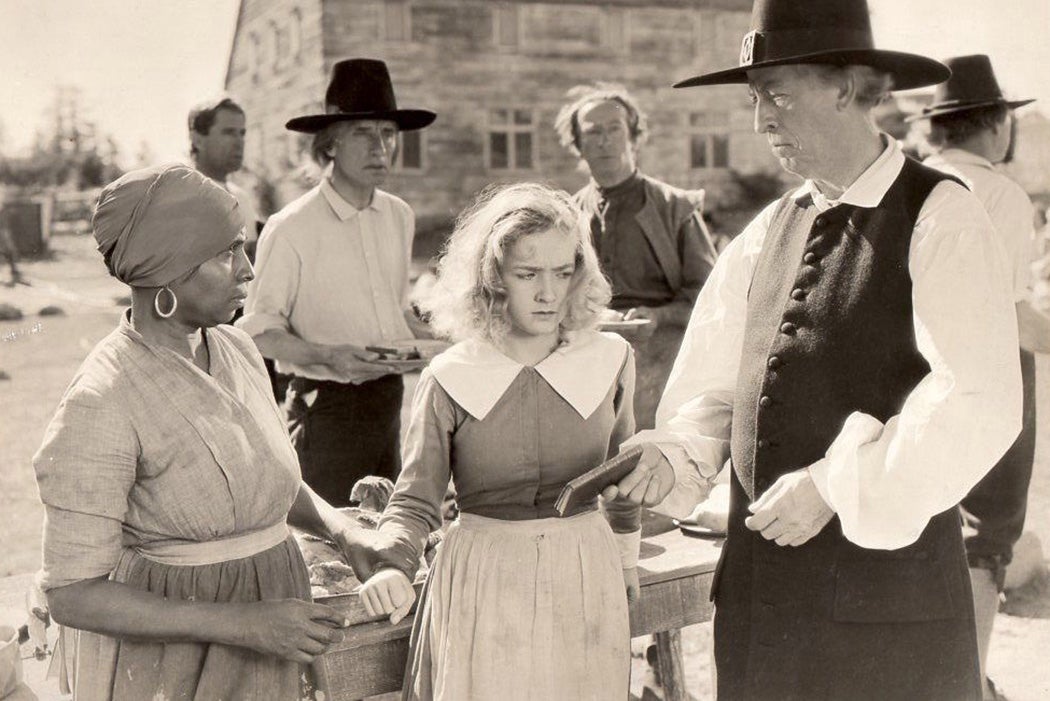No one knows where the name Madame Sul-Te-Wan came from. It belonged to Nellie Wan, a black vaudeville actress from Louisville who adopted the moniker when she transitioned to film in the mid-1910s. But the origins of her stage name have always been murky. NYU film professor Donald Bogle believes it was her way of avoiding racist condescension, since at the time, white Southerners often addressed black women by their first names, or “Aunt.” With her adopted name, “she would never be spoken to in familiar terms by anyone,” Bogle writes in Bright Boulevards, Bold Dreams.
Charlene Regester, a historian of black cinema, argues the choice was both a nod to Sul-Te-Wan’s mixed racial background—her father was supposedly a Hindu minister—and a savvy business strategy. The ambiguous name could help her leverage “East Indian, American Indian, Spanish, African, and Negro character roles,” expanding the limited acting opportunities she faced as a black performer.
According to silent screen star Lillian Gish, the full story is forever lost to history because, “no one was bold enough to ask.”
Over the course of her four-decade career, Madame Sul-Te-Wan didn’t just craft an intriguing star persona. She forced her foot in the door of the film industry, becoming the first black actress to land a studio contract, carving out a place for herself in the emerging Hollywood scene.
Madame Sul-Te-Wan became interested in acting as a young girl, when she ran bundles of laundry to stage actresses in Louisville. A few of those actresses took an interest in her, and urged the mayor to let Nellie Wan audition for a dance contest. She won first place, launching her own stage career in the process. She joined a Cincinatti theatrical company as “Creole Nell,” but later formed her own troupe, the Black Four Hundred, and toured the East Coast with her musical shows.
Amidst all these performances, Sul-Te-Wan met and married Robert Conley. The couple moved to California in 1910, but Conley deserted Sul-Te-Wan just three weeks after she gave birth to the youngest of their three boys. She needed money fast, money that was hard to find as a black entertainer. According to Bogle, local booking companies simply “refused to handle colored performers.” But she soon found work through an unlikely source: the director of The Birth of a Nation, D.W. Griffith.
Griffith was in the middle of filming Nation, his blockbuster revisionist history of the Reconstruction era, when Sul-Te-Wan approached him. As Regester notes, there are conflicting accounts on what she said or did to catch his attention—at least one story features a costume of “a red satin turban, long shiny braids that nearly reached her knees, and shiny gold earrings.” But she evidently sold Griffith on her pitch. He gave her a job, paying her a salary of $3 a day. That initial offer eventually increased to a $25-per-week contract, the film critic Ashley Clark writes.

Although Sul-Te-Wan appeared in The Birth of a Nation as an uncredited extra, Griffith reportedly scripted a much meatier character for her. She was meant to play a rich black landowner, strolling through town in fine clothes and jewelry. When a white woman slights her, Sul-Te-Wan returns the insult by spitting in her face. The scene was apparently cut by censors, relegating the actress to mob scenes. Still, it was a film role, and with a letter of recommendation from Griffith, Sul-Te-Wan was able to book others.
Her filmography was prolific, even if the roles, in Regester’s estimation, skewed towards subjugated or voodoo types. She was a maid in The Narrow Street, a slave in Uncle Tom’s Cabin, a palm reader in Hoodoo Ann, a prison inmate in Ladies They Talk About. Though she was constantly working, Sul-Te-Wan was inconsistently credited on her movies, making it difficult to piece together a conclusive filmography. For instance, she is credited as Jane’s maid Esmeralda in 1918’s Tarzan of the Apes by IMDb and Jet, but receives no such credit in the American Film Institute catalog—or in the film itself, whose lighting renders “Esmeralda” barely recognizable.
Sul-Te-Wan was rarely mentioned in the mainstream white press outside the occasional cast list, though her turn as Tituba, a slave and accused witch in Maid of Salem, garnered some rare notice. (She was also praised for her “authentic portrayal” in Silver Screen and “stand out” performance in Film Daily.) If Sul-Te-Wan was overlooked in film publications, however, she was celebrated in the black press. Newspapers like The California Eagle featured items on new Sul-Te-Wan roles to catch in theaters, her second marriage, and her son Onest’s budding film career. In these pages, she was a living legend. To readers, she was even more beloved.
Weekly Newsletter
The proof is in the letters to the editor. After Sul-Te-Wan was snubbed at the Interracial Film and Radio Guild awards in 1948, an incensed reader named Callie Stewart wrote to the newspaper. “I defy you to produce one current actor or actress who can touch Madame’s great dramatic ability,” Stewart wrote. “…[She is] your oldest, most charming, and most respected actress of today.” The letter, which stretches over several columns, isn’t merely a rant from a fan, upset that her favorite actress lost a statue. It’s a rallying cry for Sul-Te-Wan’s legacy, one that is less discussed today, but that the black actresses who followed Madame could never forget.
“She has paved the way for the modern Negro in the motion picture world,” Stewart wrote. “You should not have to wonder who I am speaking of. There is only one such pioneer: Madame Sul-Te-Wan.”







